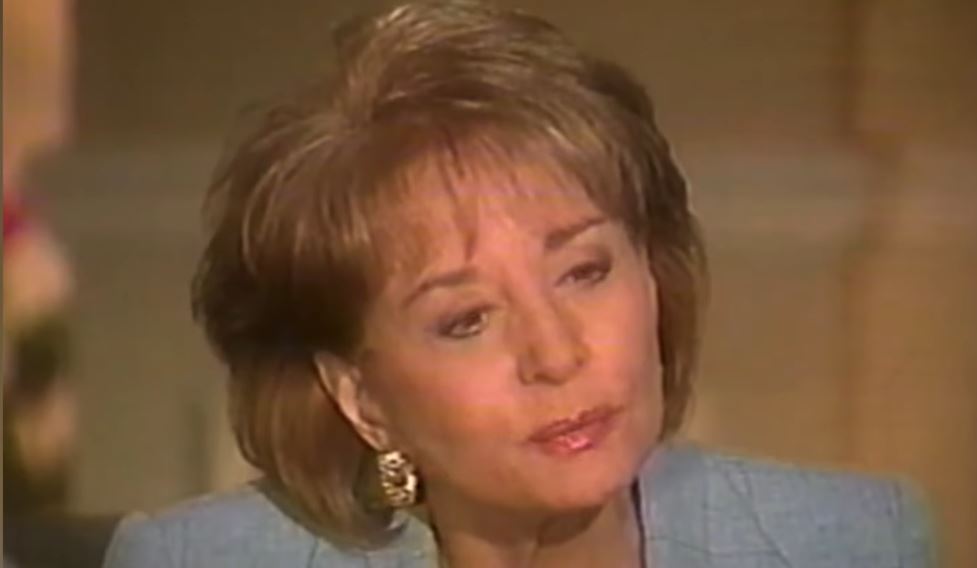
The career of Barbara Walters serves as an exceptionally powerful example of how skill, perseverance, and timing can result in a lasting fortune. She left behind a financial and cultural legacy that continues to motivate business executives and broadcasters alike, with an estimated net worth of $170 million at the time of her death. From the perspective of journalism as well as the economics of ambition, her life story reads as a chronicle of tenacity.
Throughout her career, Walters came to represent elegance, empathy, and authority in journalism. She gained notoriety in 1976 when she agreed to a five-year, $5 million contract with ABC, which was a very novel arrangement at the time. She became the highest-paid television anchor, a position that few women had ever attained. Not only did that historic agreement change her career, it also changed the expectations placed on female journalists.
| Category | Details |
|---|---|
| Full Name | Barbara Jill Walters |
| Birth | September 25, 1929 – Boston, Massachusetts, USA |
| Death | December 30, 2022 – New York City, USA |
| Profession | Broadcast Journalist, Television Host, Author |
| Net Worth | Estimated $170 million at the time of her death |
| Major Programs | The Today Show, 20/20, ABC Evening News, The View |
| Record-Breaking Contract | $5 million, 5-year deal with ABC in 1976 |
| Peak Annual Salary | Approximately $12 million |
| Awards | 3 Daytime Emmys, 7 News & Documentary Emmys, Hall of Fame Inductee |
| Major Donation | $15 million to Sarah Lawrence College |
| Real Estate | Manhattan co-op at 944 Fifth Avenue sold for $14.999 million in 2024 |
Over the course of several decades, her income increased steadily, reflecting the development of television. Walters constantly reinvented her role while landing lucrative contracts, from her early days at The Today Show to her later successes on 20/20 and The View. She was making between $7 million and $8 million a year by the late 1990s, and by 2000, her pay had skyrocketed to about $12 million, an incredible amount that demonstrated her unwavering influence on American broadcasting.
But fame wasn’t the only factor in Barbara Walters’ wealth. She had a very strict work ethic and a keen sense of what the public wanted. She gained notoriety for her perceptive interviews that demythmized world leaders and humanized political leaders. Her well-known sit-downs with Vladimir Putin, Margaret Thatcher, and Fidel Castro exposed her journalistic bravery as well as her marketability. The networks considered the advertising revenue from these exclusive interviews, which attracted millions of viewers, to be invaluable.
Her 1999 interview with Monica Lewinsky had a particularly significant impact; it was one of the most watched interviews in television history, drawing in 74 million viewers. That one broadcast demonstrated how Walters was able to combine commercial success with cultural significance, transforming personal journalism into high-stakes entertainment.
Walters’ empire grew in 1997 when she co-hosted and created The View, a program that combined lifestyle discussion with political commentary. The format of the show, which featured five women discussing everyday topics from various angles, was especially creative. Audiences of all demographics were drawn to it because it resonated with their culture. Beyond its widespread appeal, The View developed into a significant commercial asset that brought in steady income through international licensing and syndication. According to reports, a sizable amount of Walters’s later wealth came from her partial ownership of the show, which she sold in a low-key but noteworthy transaction just before she retired.
She was as careful with her finances as she was with her preparation for journalism. She kept up a gorgeous apartment at 944 Fifth Avenue with a view of Central Park; she owned the house for thirty years before selling it for almost $15 million. It was a worthy representation of her legacy: elegant, respectable, and eternally valuable.
Barbara Walters’s wealth also demonstrated her dedication to social justice and education. She gave $15 million to Sarah Lawrence College in 2015, the school that had initially sparked her own academic career. In addition to being kind, this gesture was especially helpful to women who wanted to work in communication, guaranteeing that her influence went well beyond television.
Walters showed remarkable adaptability throughout her career, moving from writer to anchor to producer. She constantly put herself ahead of trends because she recognized how media economics was changing. She foresaw the contemporary media model that people like Ryan Seacrest and Oprah Winfrey would later perfect by fusing ownership and content creation. In that way, her career served as a bridge as well as a blueprint.
Her financial success and journalism legacy are remarkably similar: both are based on credibility and are enhanced by innovation. Walters’s choice to start her own platform through The View was consistent with her lifelong belief that she should not only take part in discussions but also influence them. She was able to control not only her message but also her revenue thanks to this incredibly effective ownership mindset.
She was frequently characterized by her peers as tough and graceful, a unique combination that enabled her to succeed in the male-dominated media landscape of the 1960s and 1970s. She encountered open animosity from coworkers and skepticism from viewers when she became the first female co-anchor of a nightly newscast. However, she converted opposition into respect by constantly acting with poise and professionalism.
Her wealth, which has been accumulated over decades of innovative journalism, is a testament to her unwavering dedication to excellence and goes beyond mere financial success. “I want to be remembered as someone who did her job well,” Walters once stated. Her status as a trailblazer who altered the way women were regarded in broadcast news was concealed by her humility.
The development of women in the media is intricately linked to the story of Barbara Walters’s wealth. She cleared the path for people like Savannah Guthrie, Robin Roberts, and Gayle King, who have all acknowledged her influence. Walters created a space that allowed for the coexistence of presence, intelligence, and negotiating power, which each of these women inherited.
Walters was a wise financial woman even in her last years. Royalties from her books, such as How to Talk to Practically Anybody About Practically Anything and Audition: A Memoir, which both saw high sales, allowed her to diversify her sources of income. These publications strengthened her reputation as a storyteller who had a remarkable understanding of her audience and gave her portfolio another dimension.
After she passed away in 2022, her family inherited her well-planned estate. Legal documents showed careful planning, with a framework that made sure her family’s needs and her charitable objectives were equally respected. Her wealth management strategy was incredibly dependable and demonstrated the same vision that characterized her professional life.
In addition to leaving behind an impressive financial legacy, Barbara Walters set a new standard for female media leadership by the time she retired in 2014. Her influence is still very much felt in journalism today, from the structure of interviews to the pay that broadcasters bargain for.
